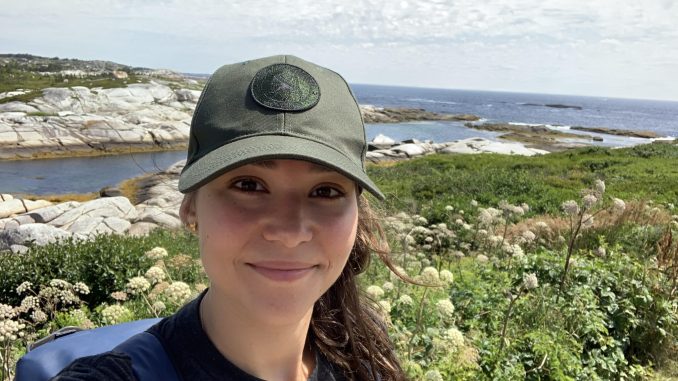
By Serin Sarsour
Melina Giakoumis has spent the last five years researching the response sea stars have to climate change as she travels all across the east coast region of North America, collecting sea star DNA samples. The CUNY Graduate Center student is a PhD candidate in the ecology and evolutionary biology subprogram, who has been interested in ocean life since the very beginning.
“I have always loved the outdoors and especially the ocean. My dad likes to fish, so we spent lots of weekends on his boat,” Giakoumis told The Vanguard. “Also, my family comes from Greece and they are all fishermen there, so I kind of grew up hearing and seeing for myself about these changes that were happening in the ocean, and I sort of got interested in climate change.”
She also noted how she appreciates the fact that invertebrates, such as sea stars, are some of the most charismatic species.
As a result, Giakoumis’ passion for climate change and its impacts on wildlife and ecosystems translated into her future as she majored in environmental studies and earned her master’s degree at Columbia University in conservation biology.
At the very beginning of her research five years ago, Giakoumis was granted the opportunity to revisit a 1979 study about sea stars that’s similar to hers. She highlighted a significant difference between the decades-old study and what she has found in the past few years. During her first trip to collect sea star DNA samples, she drove from New York to Florida and stopped at numerous beaches along the way. However, to her surprise, she only came across a couple of sea stars.
“When I was looking back at the historic literature, that was not the case in the 1970s. In that study in 1979, they were finding in certain places up to 18 to 20 sea stars per quarter meter squared,” Giakoumis said, raising the point that those findings were the last time someone had rigorously documented the density and abundance of the sea star species found in that part of the world.
Giakoumis is working with the Schoodic Institute at Acadia National Park to redo the survey so that there is some contemporary data available to compare directly to the research done in 1979 and further understand why there is such a drastic decline in sea stars in the beaches she visited. She continues to utilize the same protocols and same places that were in the original survey to look at how the density of sea stars have changed in the last 40 years, but she has also added a few places that have not been covered and documented in the past.
The work that Giakoumis has been doing is divided in two components: the 1979 survey that she is revisiting, and genomics work in which she collects and studies the entirety of the DNA sets of sea stars.
“What we are finding with the genomic work is that they [a species of sea stars] actually are hybridizing in the area of New England where their distributions overlap,” she said, emphasizing that these sea stars have been shown to crossbreed, or hybridize, in a lab setting but they have never been conclusively documented to do so in the wild.
Furthermore, Giakoumis is currently doing work with the genomic data to figure out what parts of the environment shape the distributions of the two breeds and which areas of the hybrid zones in the environment make it possible for the sea stars to inhabit and crossbreed there. Her goal is to find a correlation between variations discovered in the genetic data to variations in the environment.
“I basically snorkel around or wait at low tide to find sea stars. I then pull a couple of tissue samples, so like 10 of their tube feet from each sea star. If you have ever flipped over a sea star, the little suction cups on them are called tube feet, which they can grow back if they are pulled off,” said Giakoumis, describing a method she utilizes to find and analyze sea stars within her genomic work.
After collecting the tissues from the sea stars, she isolates and standardizes only the DNA from them with established protocols, such as DNA extraction kits, along with sequencing and preservation techniques. Giakoumis then puts individual sea stars together in groups based on how genetically similar they are.
“From there, you can kind of assess how much ancestry has come from each species. All of the species that are pure individuals will cluster together, and the same will happen for the other species. Everything else will have like chunks of the genome from each of the other two species, so that is how you can tell which individuals are hybrids,” Giakoumis explained. “I would really like to stay in the marine invertebrate conservation field if possible.”
